Mines Department blasts holes in Alcoa’s jarrah forest care claims
Endangered cockatoos - 105,000 exploration holes a year - insecure offsets: WA’s mining regulator has questions for the US miner.
Special Cluedo™️ edition 🔍 Was it Mr Cook or Prof Smith?

Late on Friday, May 23rd, the WA Government and the Murujuga Aboriginal Corporation (MAC) released a major scientific study into whether emissions from industry on the Burrup Peninsula are damaging the area's more than one million rock art engravings.
WA's Cook Labor government welcomed the finding that current levels of industrial pollution - mainly from Woodside's two gas plants, Yara's facilities and ships exporting Rio Tinto's iron ore - were safe for the rock art.
It was exactly a week before federal environment minister Murray Watt's deadline to decide whether Woodside's North West Shelf (NWS) plant could operate until 2070.
By law, Mr Watt's only environmental concern was the protection of the Murujuga rock art that is up to 50,000 years old. Woodside's NWS plant is by far the dominant source of the pollutant of most concern: nitrous oxides, or NOx.
The output of the Murujuga Rock Art Monitoring Program (MRAMP) was a crucial input into Mr Watt's decision. It seems the WA government eventually gave a version of the study to Mr Watt's predecessor Tanya Plibersek in February.
However, its public release three months later gave little time for the media or experts to digest this work before Mr Watt made his decision, but within days, its credibility was severely tarnished.
Who killed the credibility of the rock art science?
Was it Mr Cook 🧑🍳 from Dumas House with his dodgy executive summary?
OR
Professor Benjamin Smith 👨🏫 from the ivory tower with a media conference?
Unlike conventional Cluedo™️, the Murujuga edition involves not one professor, but three. However, first, let's examine three crucial documents.
The study produced a raft of documents, but the three most important are:
The revision pages of the two substantial reports indicate that by late January 2025, all peer review comments had been incorporated, and the scientific work was essentially complete.
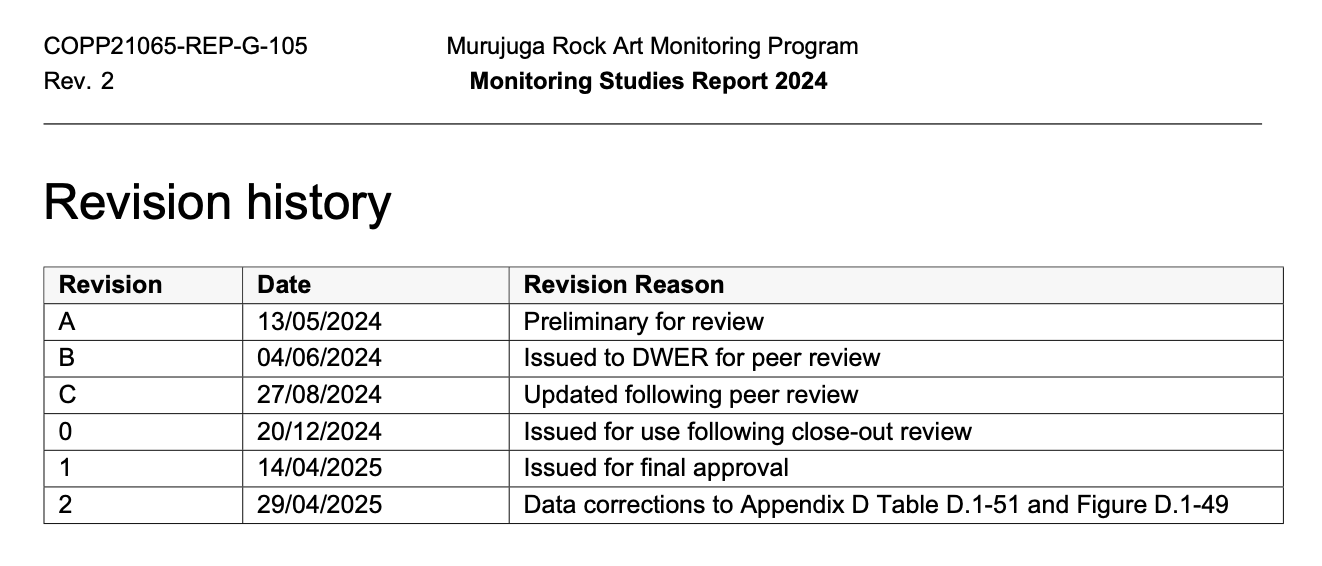
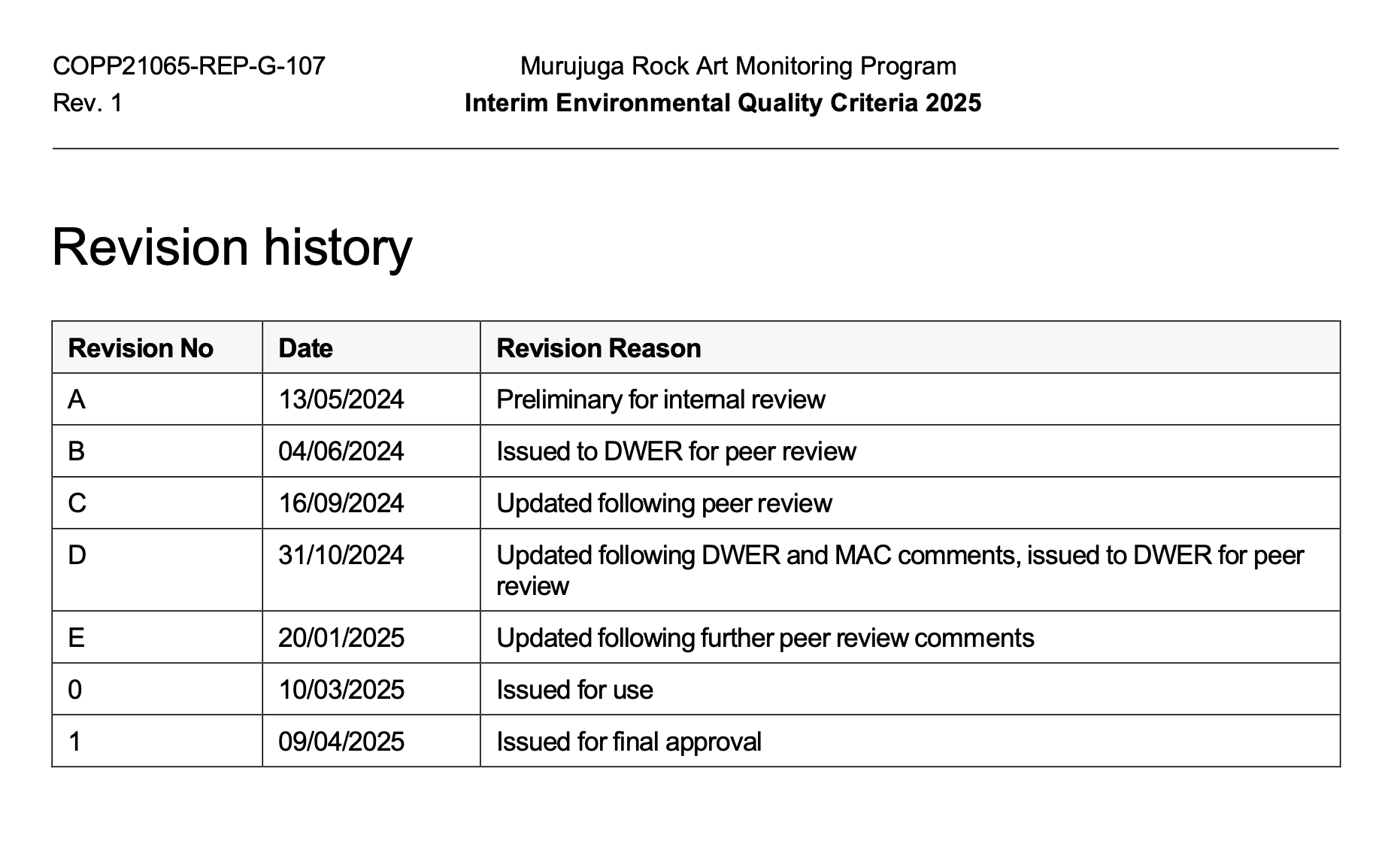
In November 2024, parliament was told, "When the peer review process is finalised, the documents will require joint approval by DWER and the Murujuga Aboriginal Corporation prior to publication".
Publication was expected in "early 2025," but the Department of Water and Environmental Regulation and MAC took four months to approve the documents and produce a very brief executive summary.
📝 Conclusion - The reports could have been finished and released much earlier if there was the will.
On the Tuesday after the release, University of WA Professor of Archaeology Benjamin Smith praised the main scientific work as "brilliant" but said the executive summary was "clearly written by the WA government and contradicts directly the findings of the report."
🔍 Exhibit C - Prof. Smith in front of Parliament House to "blow the whistle" on the WA government.
Before Prof. Smith's press conference, I'd already approached the lead scientist of the study, Professor Ben Mullins of Curtin University, for an interview.

Speaking to Prof. Mullins was the perfect way for a journalist to sort through claim and counterclaim, as he appeared to be respected on both sides: the WA government has awarded his team the $26 million research contract, and Prof. Smith spoke highly of him.
So, I waited for DWER and MAC to respond, then twice followed up with both organisations the next day.
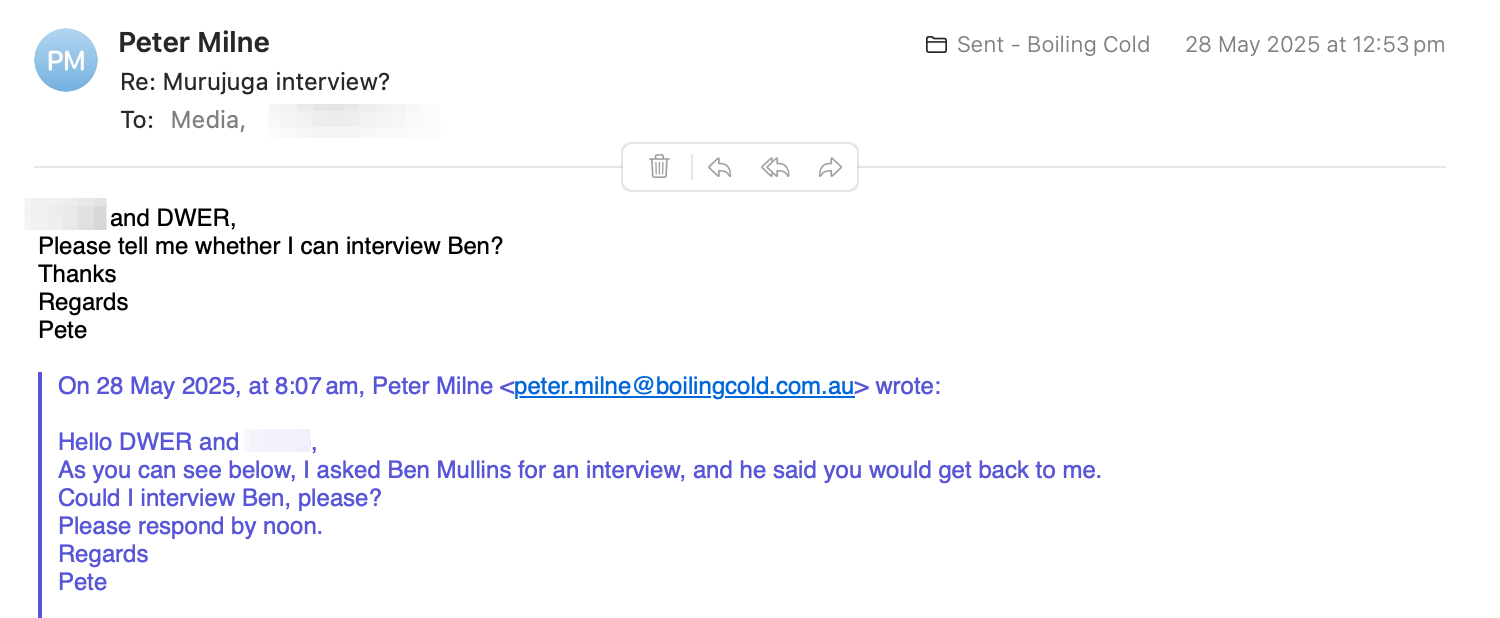
At this stage, DWER and MAC must have realised I was going to keep bugging them, so the simplest plan to deal with an unwanted question - ignore it - would not work.
Then, within an hour, I got my answer - but from Curtin University, whom I had not contacted and who are not a party to the contract gagging Prof. Mullins.
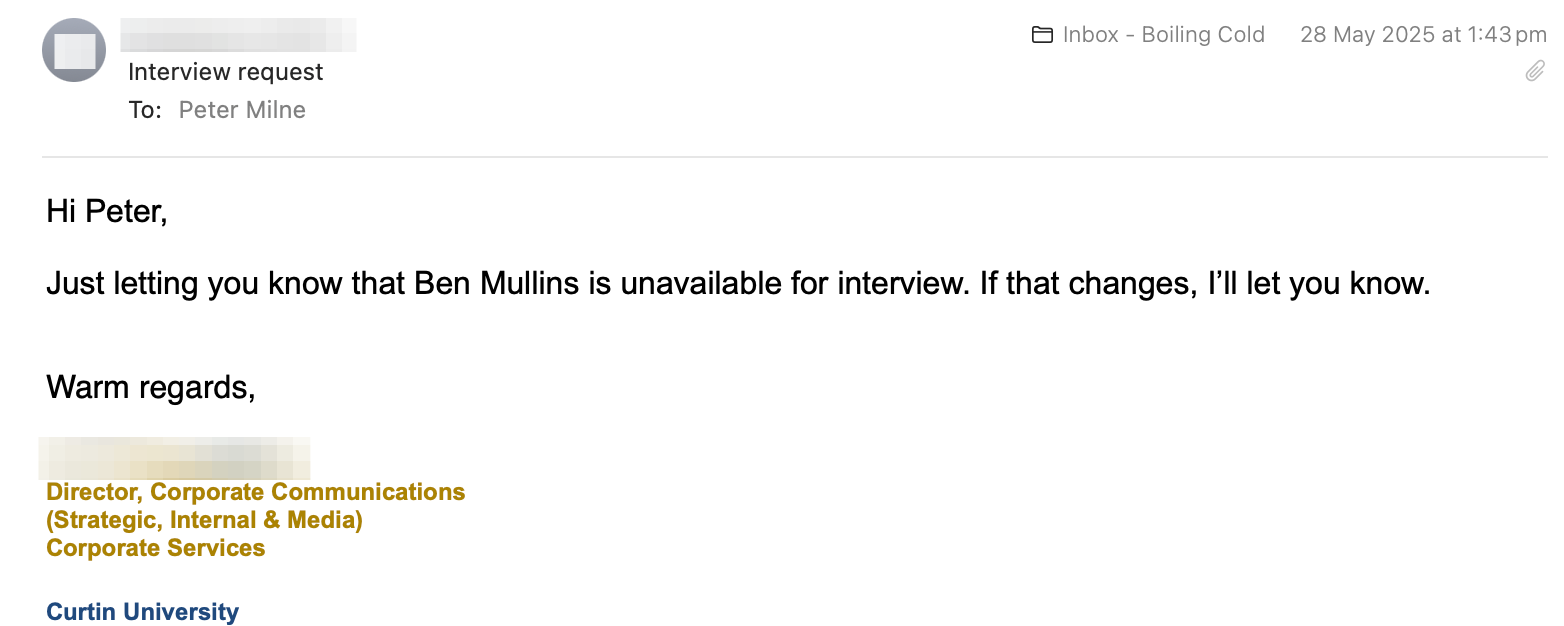
📝 Conclusion - The WA Government and/or MAC will not allow Prof. Mullins to talk to the media but do not want to say this on the record.
👀 Observation - I naively thought Universities stood for free and open debate. Sad to see Curtin help obscure the fact that the WA government is gagging one of its academics by doing its communications dirty work for them.
Befitting of an investigation into science, we now have a third professor - detected by the ABC's Rhiannon Shine - statistician Emeritus Professor Adrian Baddeley.
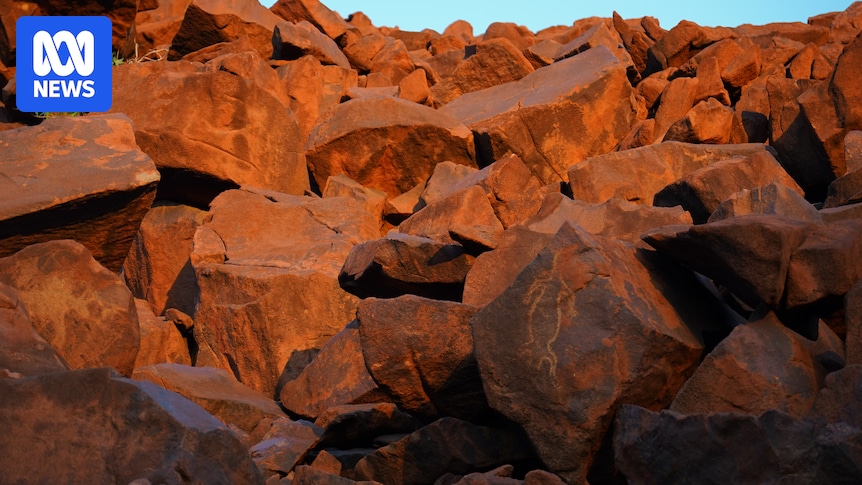
🔍 Exhibit F - A senior scientist on the Curtin team berates DWER.
Prof. Baddeley had signed off both the main study and the EQC report as "approved", but was less than happy with the executive summary.
Ms Shine had obtained an email that Prof. Baddeley had sent to DWER last Tuesday, in which he complained that the executive summary had altered a crucial graph against his advice and without his knowledge.
"In my opinion, this constitutes unacceptable interference in the scientific integrity of the project," he said.
Prof. Baddeley's concern about the graph (see next section) was identical to one of the concerns Prof. Smith had aired hours earlier.
To clear all this up, two days later, our old friend from the Curtin communications team wades in again with a statement from Prof. Baddeley:
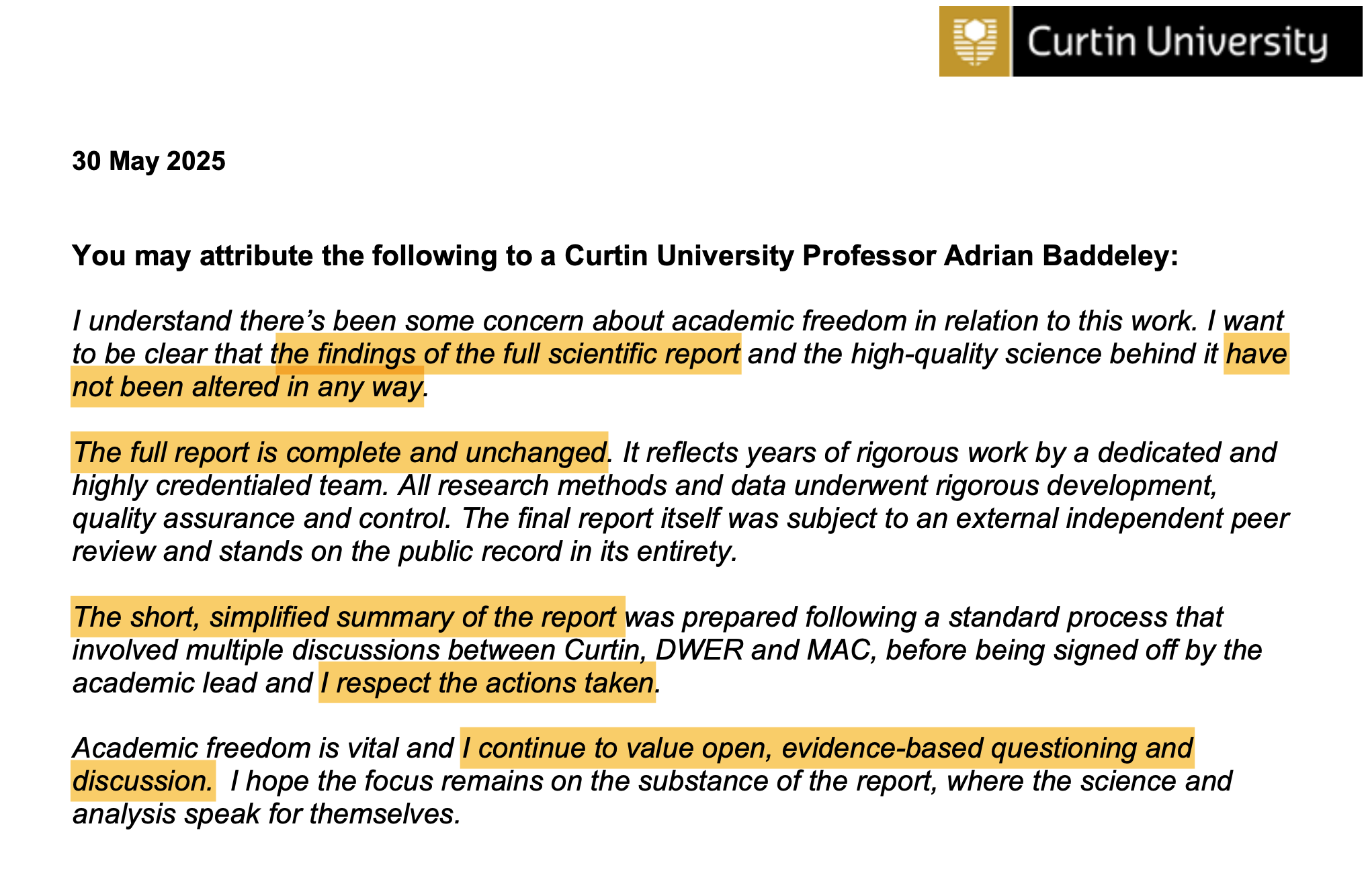
Note that Baddeley retracted none of his allegations in this statement. Presumably, this convoluted word salad was the most the powers that be could extract out of him.
He did, however, confirm that DWER and MAC were involved in producing the executive summary.
And I appreciated hearing about a commitment to "questioning and discussion" from the same email address that had denied me an interview with Prof. Mullins two days earlier.
📝 Conclusion - Two noted scientists have expressed on the record their concerns that a vital graph in the executive summary is misleading.
The scientific work on the Murujuga rock art is about answering whether industrial pollution is affecting the incredibly thin coloured patina of the rocks at Murujuga that is the basis for the rock art, and, if so, what to do about it.
The full ECQ report presented two safe levels of NOx pollution (left-hand graph, the yellow and teal lines) using different methods, and plotted these against NOx measurements taken from around the Burrup Peninsula.

However, the similar plot in the executive summary (right-hand side), which at only eight pages will be much more widely read, omits the more stringent EQC.
Prof. Baddeley told DWER the missing teal-coloured line shows "that five of the monitoring sites were experiencing pollutant levels above the interim guideline, and again these are the five sites closest to industry," he wrote.
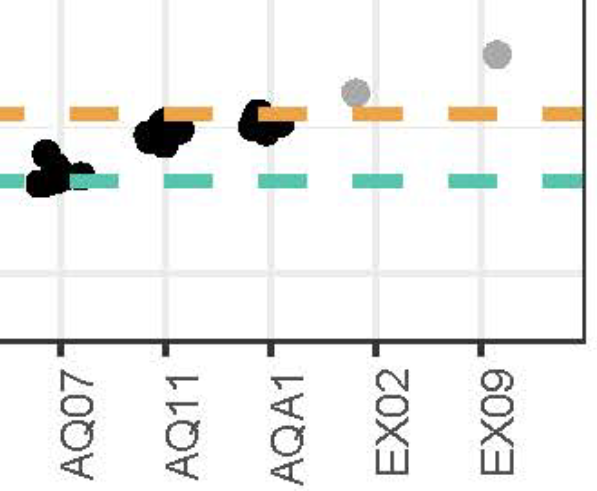
A close look shows that two sites - the two closest to Woodside's two gas plants - have unsafe levels of NOx even by the more lenient limit in the executive summary.
Consequently, according to Prof. Baddelly, the executive summary was incorrect when it said, "The research indicates that the current levels of the pollutants of most concern for the rock art are lower than the interim guideline levels".
📝 Conclusion - Not only did the executive summary include, against the advice of a senior scientist, a plot that makes the pollution look less worrying, but it also makes a sweeping statement that is unsupported by that altered plot.
In addition to the altered plot, another concern of Prof. Smith's was the conclusion that while some rock surfaces had become porous due to pollution, this was due to a power station that had operated on particularly dirty fuel until 1986.
The conclusion absolved current industry from blame for the damaged rock surfaces.
However, separate from Curtin's work for DWER and MAC, Prof. Smith had an independent team conducting research on the rock art.
One investigation examined the condition of a rock collected by an archaeologist in the damaged area in 1994, which had since spent decades in a cupboard.
Prof. Smith's team looked at the rock under a microscope and found none of the damage present in the area now.
"We have direct proof that this problem of elevated porosity - in other words, that the rock has become like a Swiss cheese - has happened since 1994," he said.
"It's happened with the current pollution levels and by the current industry that we have operating at Murujuga,
"We have a serious problem."
Ah, but do we?
The next day, Woodside chief executive Meg O'Neill shot back:
"People who seem to be pulling rocks out of cupboards, really, I find it hard to give that any credibility,” she opined.
Now we have to decide who to trust - Prof. Smith and his team, or Ms O'Neill's scientific insight, based on the untrustworthiness of things that come from cupboards?
For those who choose the latter, please, for your own safety, immediately empty the contents of your pantry into the bin.
📝 Conclusion - There seems to be strong evidence that a key finding of MRAMP, that the rock surface damage it did find was due only to past industry, may be wrong.
It's fair to be sceptical when claims are made that people are colluding behind closed doors to effect an outcome.
In this case, it is the Labor Party that prides itself on having a greater commitment to Indigenous empowerment than the other mob.
So would Mr Cook and his government distort science to protect a major resource company?
Absolutely and unequivocally yes.
They are doing it now to protect Alcoa's profits at great risk to Perth's water supply, and it is all documented through numerous freedom of information requests.

🔍 Exhibit J - Roger Cook rearranged governance of bauxite mining to ensure he only gets advice that supports continued mining.
📝 Conclusion - Mr Cook has form.
🕯️🗡️🪢🪈🔫🔧
This story demonstrates the extent of work required by a journalist when major players employ delay and vague replies to try to kill legitimate stories.
All I wanted to do was interview Prof. Mullins.
If you want to back WA's most independent journalism, please sign up for monthly support or make a one-off donation. Thank you.
This story was originally published in the Boiling Cold newsletter on June 4.
All the info and a bit of comment on WA energy, industry and climate every Friday